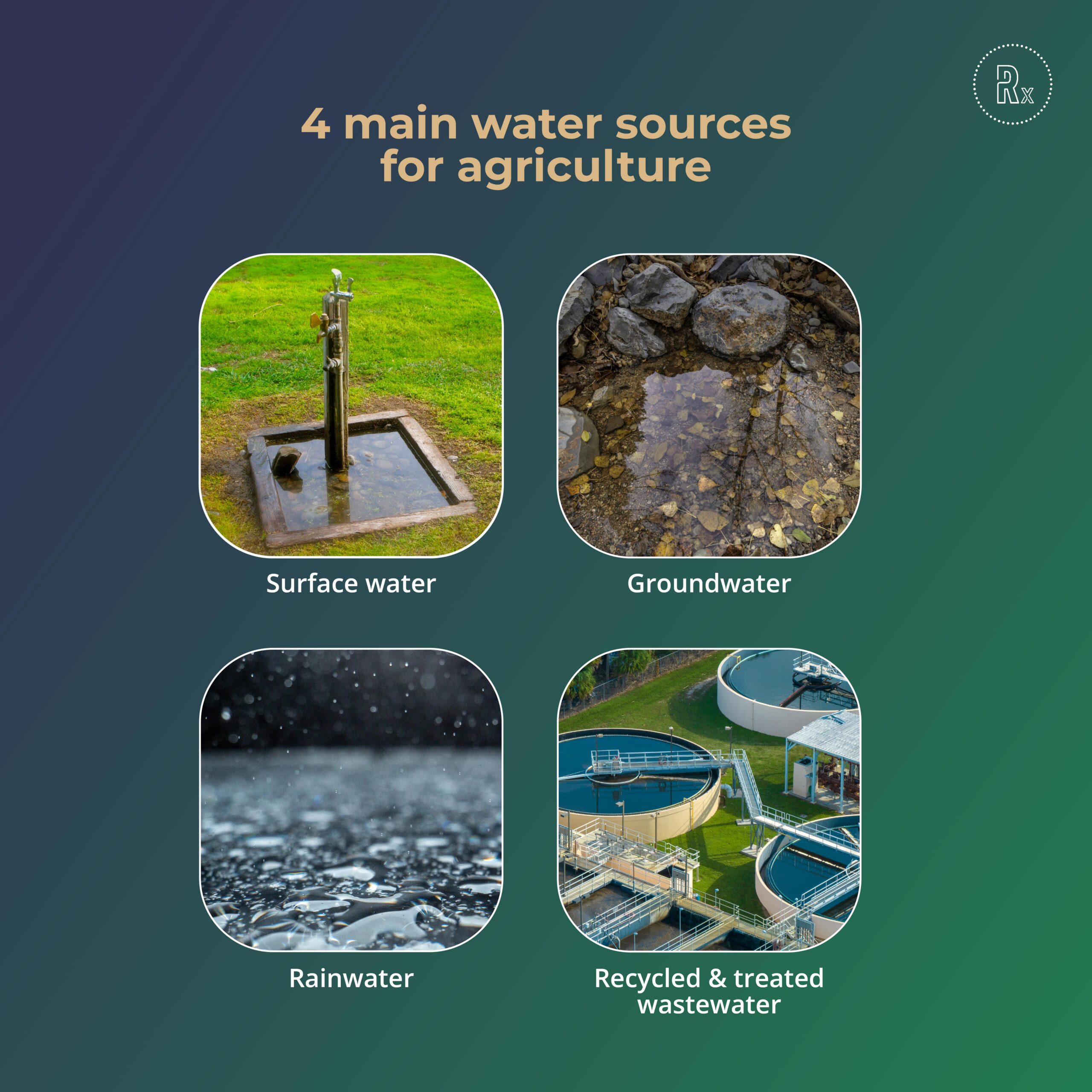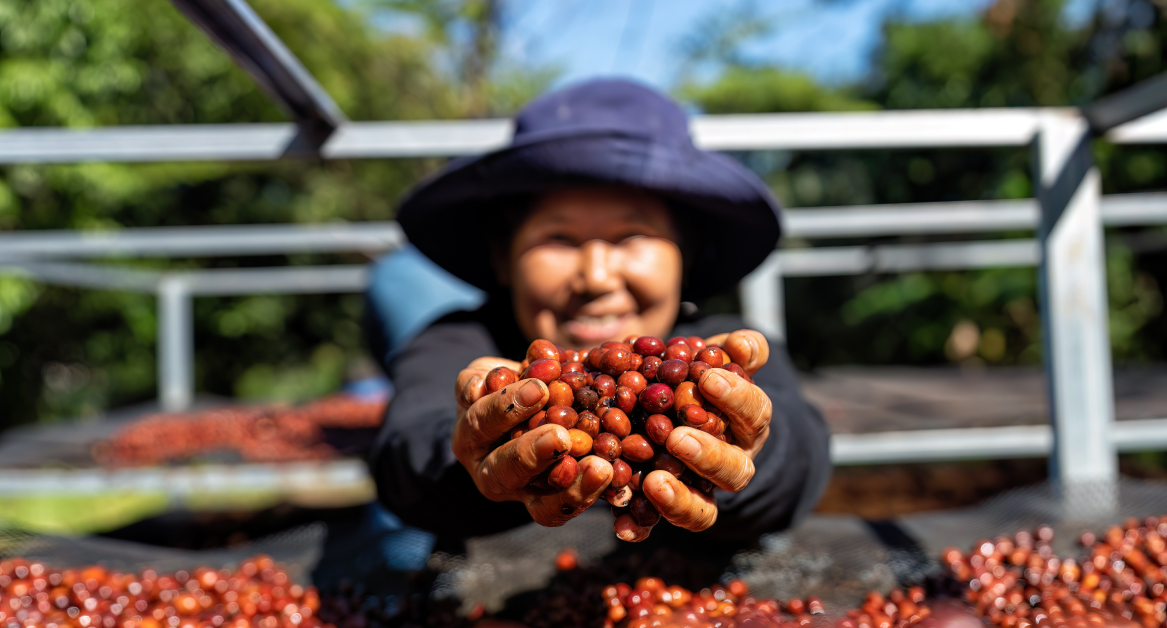Water is the lifeblood of agriculture. Its management, however, goes beyond just about watering crops. Proper agricultural water management ensures a balance – between nourishing the fields and conserving a precious resource.
With concerns over food security and the increasing competition for water in agriculture everywhere, how can farmers efficiently manage this invaluable resource? The answer lies in understanding its sources, optimizing its usage, and embracing technology.
Let’s dive into the invaluable knowledge of agricultural water management strategies, for every drop, counts.
Understanding agricultural water management
Agricultural water management isn’t merely about directing water to plants. It’s a comprehensive approach that addresses the multifaceted needs of the entire agricultural sector. Here’s why it’s crucial:
- Water management practices: Managing water involves an array of practices that ensure the most efficient use of this resource. These practices span from deciding when and how much to irrigate, to how to sustain water for the dry season.
💡Drip irrigation, for example, targets the root zones, reducing wastage of irrigation water and increasing water use efficiency.
- Food security and agricultural production: It’s no surprise that effective water management directly impacts agricultural production. With appropriate measures, farmers can guarantee crop yields even in unfavorable conditions, ensuring food security.
- Addressing water quantity and quality: Not only is the quantity of water significant, but its quality plays a pivotal role in crop health. Managing the soil-water-plant relationship becomes vital here, as a balance needs to be struck between adequate hydration and nutrient absorption.
- Remote sensing in agriculture: Technology is redefining how we perceive agricultural water management.
💡Remote sensing, for instance, provides insights into surface water availability, helping farmers make informed irrigation decisions and improve water use.
The irrigation management challenge isn’t just about harnessing water but doing so in a way that respects nature’s rhythm and the health of our ecosystems. With global changes, the agricultural sector faces unprecedented shifts. Hence, adopting these water management practices becomes not just a choice but a necessity.
Water sources for agriculture:
Water is a fundamental element for crops, but its sources can vary dramatically. Here’s a closer look at the main contributors:
- Surface water: This is the most commonly utilized source for irrigation. It includes water from rivers, lakes, and reservoirs. While they are major contributors, the competition for water from these sources is intensifying, especially in regions with limited rainfall.
- Groundwater: Tapped by wells and tube wells, groundwater serves as a lifesaver in regions where surface water is scarce. However, it’s essential to monitor groundwater levels to prevent over-extraction, ensuring its sustainability for future generations.
- Rainwater: Depending on the season and region, rainwater can either be a primary or supplementary source. With the unpredictability of rainfall patterns, rainwater harvesting is gaining traction, helping farmers store water for dry spells.
- Recycled & treated wastewater: As we advance in technology and innovation, treated wastewater offers a promising source for irrigation. By recycling and treating urban wastewater, agriculture can benefit, especially in water-scarce areas.

Irrigation techniques and efficiency:
With varying water sources, the methods of delivering water to crops are equally diverse. Let’s explore:
- Drip irrigation: This method directly targets the root zones. It’s not only efficient but also conserves water. By reducing evaporation losses and enhancing water use efficiency, it’s a win-win for both farmers and the environment.
- Sprinkler systems: Mimicking rainfall, these systems distribute water through a series of pipes and sprinklers. While effective for certain crops, it’s essential to monitor water quantity to prevent over-watering.
- Flood irrigation: One of the oldest methods, it involves flooding the field. While it’s less efficient compared to modern techniques, it’s still prevalent in certain regions.
- Subsurface irrigation: Delivers water directly below the soil’s surface. It’s especially effective in areas where evaporation is a concern.
Each technique has its merits, but the choice often depends on factors like water availability, type of crop, and soil conditions. For a practical understanding of how these techniques operate in the real world, check out our blog on top sustainable agriculture examples around the globe.
11 common ways for water conservation and storage:
Safeguarding our precious water and natural resources also requires strategic thinking and the adoption of sustainable practices that ensure long-term and stable production:
- Soil conservation:
- Terracing: By adapting land into steps, this method reduces the speed of water, preventing erosion and aiding absorption.
- Contour plowing: Aligning crop rows against the natural slope decreases runoff and boosts water retention.
- Cover crops: Planting crops specifically to protect and enrich the soil reduces water loss and mitigates erosion.
- Mulching:
- Organic mulches: Items like straw or compost help to maintain soil moisture.
- Inorganic mulches: Plastic sheets or stones can also be effective in retaining water, though each has its environmental considerations.
- Rainwater harvesting:
- Rooftop collection systems: These systems catch rainwater from rooftops, directing it to storage tanks.
- Ground catchment systems: Expanding the surface area for rainwater catchment, these systems use the land itself as a catchment area.
- Ponds and reservoirs:
- On-farm ponds: Small-scale ponds built within the farm can store rainwater or runoff for future use.
- Check dams: These structures arrest the flow of water in gullies or streams, enabling groundwater recharge.
- Water management practices:
- Crop rotation: Planting different crops in succession can aid in preserving soil structure and optimizing water use.
- Sustaining water quality: Regular testing ensures harmful substances don’t contaminate the water source, ensuring both crop health and food security.
Technology and innovation in water management:
With the combination of agriculture soil science and technology, we’re ushering in an era of smarter, more efficient farming:
- Remote sensing:
- Satellite imaging: Advanced satellites can offer detailed insights into soil moisture, crop health, and even predict potential drought areas.
- Drone technology: Drones equipped with sensors offer real-time data collection, helping farmers make instantaneous decisions.
- Smart irrigation systems:
- Moisture sensors: Placed in the soil, these sensors provide real-time data on soil water levels, ensuring crops receive optimal water.
- Automated drip systems: Integrated with AI, they adjust water delivery based on a combination of sensor data, weather forecasts, and crop needs.
- Water quality monitoring:
- Portable testing kits: These kits enable on-the-spot water quality assessments, giving immediate feedback on potential contaminants.
- Data-driven management: By integrating IoT (Internet of Things) devices with farm infrastructure, farmers receive continuous feedback, allowing for the proactive management of water resources.
- RegenX platform:
- Enable farmers capture continuous farm input including water, crops, fertilizer and other following regenerative practices
- Get income uplife through pre-finanicing program and gamification while leveraging historical data for future crops
Harnessing the potential of technological water management
At the crossroads of regenerative agriculture and water lies the hope for a sustainable future. By effectively managing our water resources, we don’t just nourish crops but pave the way for a world where food security is a given, and nature thrives.



